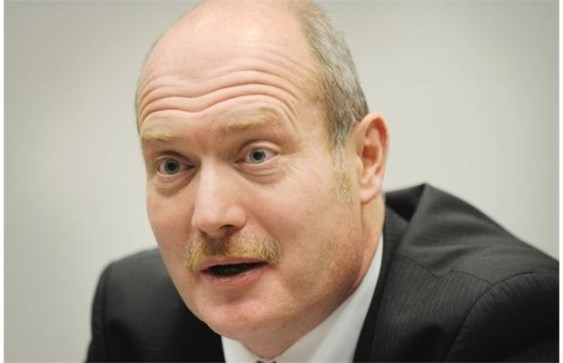The day before Finance Minister Mike de Jong delivered B.C.’s 2014-15 budget, he got his shoes re-soled.
The big $44-billion production he was about to unveil was based on an estimated surplus of a measly $184 million, and he wanted something to symbolize austerity and making do, to bring home the point about how little leeway there was.
He got the shop to punch a new hole in his belt while he was there. To do with belt-tightening, get it?
It turns out he could have bought the fanciest kicks going, and sported a rhinestone belt buckle the size of a rodeo star’s, based on the final tally. The final report on that budget was released Wednesday. The actual figures, certified by the auditor general, show a surplus of $1.68 billion, nine times higher than the first estimate.
Not many ministers can be almost 1,000 per cent off on an estimate and still look happy. But de Jong managed it. In a world pondering whether assorted fiscal traumas will amount to another recession, B.C. is a “positive outlier,” he said.
“No one else is looking at these numbers.”
The only downside to being so erroneously pessimistic is that after everything turns up roses or close to it, people are entitled to ask: “What’s in it for us?”
The big benefit is a saving of hundreds of millions a year on borrowing costs, he said, since government has stopped borrowing to cover operating costs. There’s no doubt that’s a benefit, but it’s a largely invisible one. On the more tangible side, he cited some new programs that were rolled out in the current budget, such as the child tax credit and the skill-training grant.
De Jong is fond of equating the provincial budget to a household one, and warning that deficits are like borrowing to buy groceries.
Following that analogy, he’s now in the position of a dad who declared the family can’t afford restaurant meals or summer holidays, then finds he did the numbers wrong and there’s a lot more money around.
Does he start throwing it around to make up for overstating the “razor-thin” margin he thought he was working with?
Of course not. That’s not how finance ministers — or most parents — think. Instead, he started talking about “economic storm clouds” and looming unforeseen costs, like a firefighting bill that could be orders of magnitude above the nominal figure ($63 million) that was plugged into the annual budget. (The government puts an average of previous years down in every budget, but generally spends whatever it takes.)
How that will work out depends on the weather.
In the meantime, it’s worth looking at how B.C. wound up more than a billion dollars better off than the government thought it would be.
On the spending side, government program spending increased by $1 billion over the year. Most notably, health spending was held to a half-billion dollar increase. It has been held to that rate for the past three years, far smaller than in previous years.
On the revenue side, the picture brightened steadily over the year. Natural-resource revenues were down or even compared to the previous years. Federal government transfers were down. But there were extraordinary increases in total tax revenues, $900 million more than was estimated by the re-soled, cinched-up minister at the start of the year.
Personal income-tax revenue jumped by 18 per cent, partly because it was the last year of the two-year rate hike for higher-income earners. Corporate income tax was up 8.6 per cent. The provincial sales brought in six per cent more than the previous year. The property transfer tax revenue increased 14 per cent.
And the net earnings of B.C. Hydro, ICBC, B.C. Lottery Corp. and the liquor branch increased by $670 million, thanks partly to some fee hikes.
Retail prosperity, high employment and a booming housing market sent a lot of cash flowing the government’s way. But don’t look for waves of new money to start flowing. They’re vigilant about new costs to worry about. And there’s always something.



